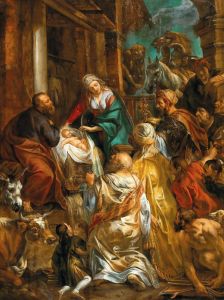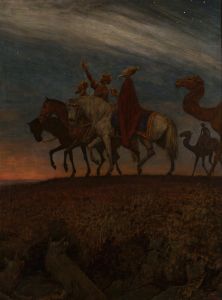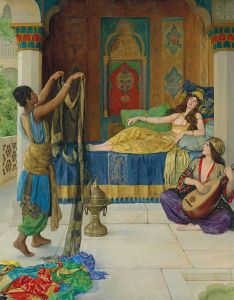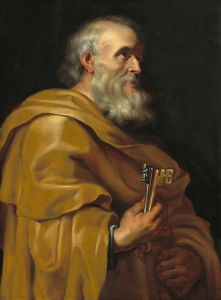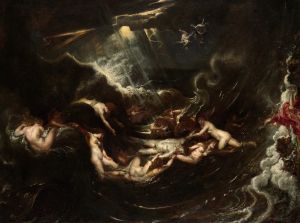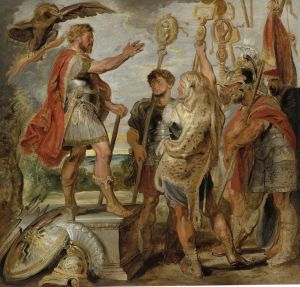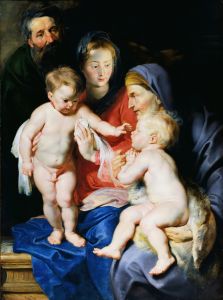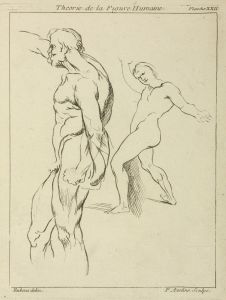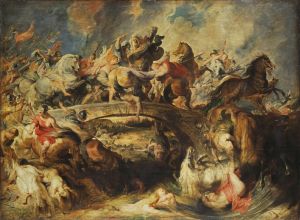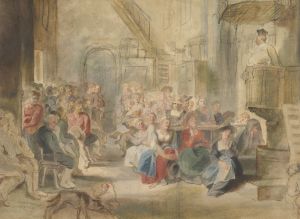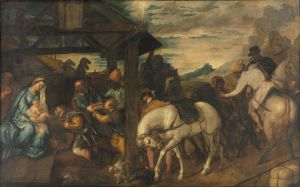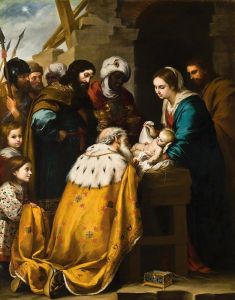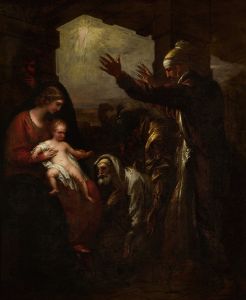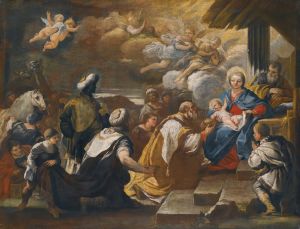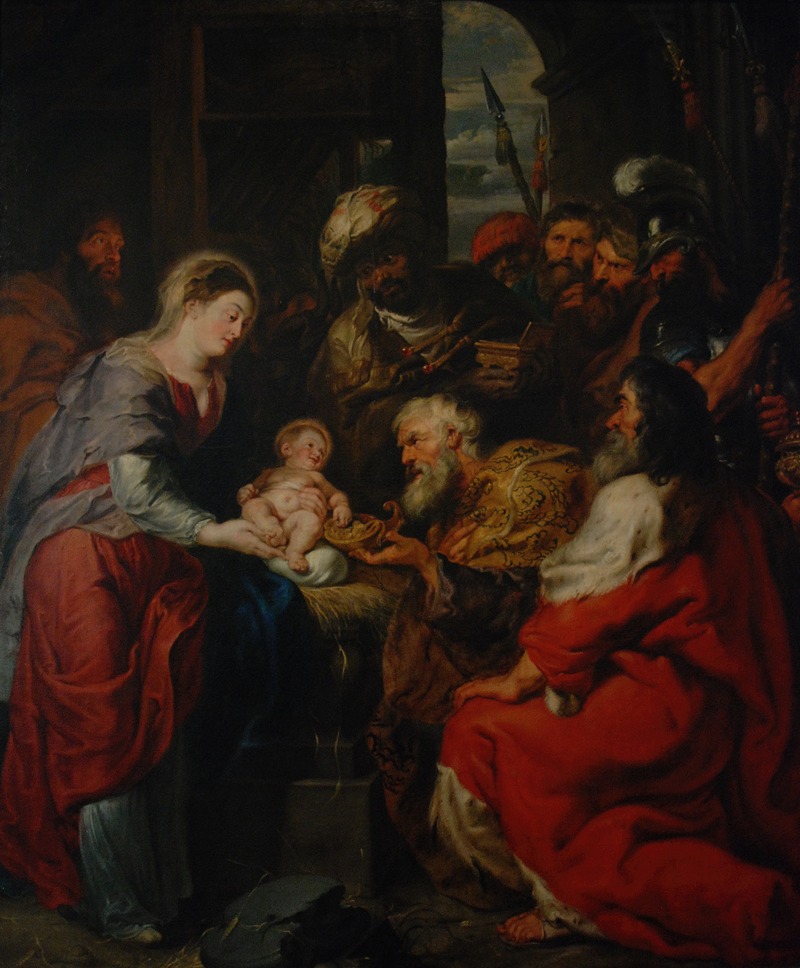
Adoration of the Magi
A hand-painted replica of Peter Paul Rubens’s masterpiece Adoration of the Magi, meticulously crafted by professional artists to capture the true essence of the original. Each piece is created with museum-quality canvas and rare mineral pigments, carefully painted by experienced artists with delicate brushstrokes and rich, layered colors to perfectly recreate the texture of the original artwork. Unlike machine-printed reproductions, this hand-painted version brings the painting to life, infused with the artist’s emotions and skill in every stroke. Whether for personal collection or home decoration, it instantly elevates the artistic atmosphere of any space.
The "Adoration of the Magi" is a painting by the Flemish Baroque artist Peter Paul Rubens. This artwork, created in 1609-1610, is one of Rubens' most celebrated depictions of the biblical scene where the three Magi present gifts to the infant Jesus. The painting is notable for its dynamic composition, vibrant color palette, and the dramatic interplay of light and shadow, which are characteristic of Rubens' style.
Rubens was commissioned to create this piece for the Antwerp City Hall, and it reflects his mastery in capturing the grandeur and emotion of the moment. The painting measures approximately 355 cm by 493 cm, making it an impressive and imposing work. It is currently housed in the Museo del Prado in Madrid, Spain.
In "Adoration of the Magi," Rubens portrays the three wise men, traditionally named Melchior, Caspar, and Balthazar, presenting their gifts of gold, frankincense, and myrrh to the Christ child. The scene is set within a classical architectural framework, with the figures arranged in a dynamic and somewhat theatrical composition. The Virgin Mary, holding the infant Jesus, is positioned centrally, drawing the viewer's attention. Joseph stands nearby, observing the scene with a sense of reverence.
Rubens' use of color is particularly striking in this painting. The rich, warm tones of the Magi's robes contrast with the cooler hues of the background, creating a sense of depth and movement. The artist's skillful application of light and shadow enhances the three-dimensionality of the figures and adds to the overall dramatic effect.
The painting also reflects Rubens' extensive knowledge of classical art and his ability to integrate various influences into his work. The figures are rendered with a sense of realism and vitality, and their expressions convey a range of emotions, from awe and reverence to curiosity and wonder. This attention to detail and the ability to capture the human experience are hallmarks of Rubens' artistic style.
"Adoration of the Magi" is not only a religious painting but also a reflection of the cultural and artistic milieu of the early 17th century. Rubens was deeply influenced by the Italian Renaissance, particularly the works of artists such as Michelangelo and Caravaggio, and this influence is evident in the composition and execution of the painting. The grandeur and opulence of the scene also reflect the Baroque era's emphasis on drama, movement, and emotional intensity.
The painting has been well-preserved and remains an important part of Rubens' oeuvre. It continues to be studied and admired for its artistic excellence and its ability to convey the profound significance of the biblical narrative. "Adoration of the Magi" stands as a testament to Rubens' genius and his contribution to the development of Baroque art.





